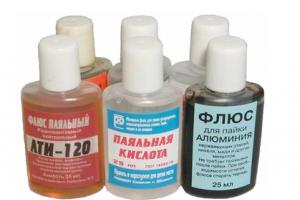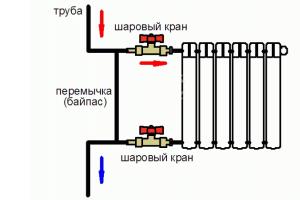The main treatment for gonorrhea, as an infectious disease, is the prescription of antibacterial agents. With timely diagnosis and proper development of a treatment regimen, the pathology is completely curable. The main thing is to entrust your health to qualified specialists. Let's talk in more detail: how to treat gonorrhea in women, men and pregnant women, what pills and drugs are used, as well as folk remedies at home.
Forms of pathology
Sometimes patients doubt whether gonorrhea can be cured, putting the disease on a par with HIV infections or parenteral hepatitis. However, the pathology is bacterial in nature, so treatment of gonorrhea is successful. After a course of medications, the disease does not cause any consequences. True, the risk of re-infection cannot be excluded, since immunity is not stable.
Patients often ask how many days it takes to treat gonorrhea. The course of therapy depends on the nature of the pathology:
- Acute form- can be cured quickly, some schemes require a single dose;
- Chronic form- it takes a long time to be treated, sometimes several consecutive courses with changes in medications are required.
Treatment of gonorrhea is carried out in a hospital or on an outpatient basis, at home. In most cases, it is necessary to prescribe drugs orally, less often by injection. Local remedies are rarely used, mainly when antibiotics are contraindicated.
A treatment regimen for gonorrhea is prescribed by a doctor after diagnosis.
Drugs prescribed incorrectly for complicated gonorrhea cause bacterial resistance. The disease becomes chronic.
Principles of therapy
Before treating the disease, it is necessary to establish which drugs the pathogen is sensitive to. To identify, culture from the urethra is carried out on special diagnostic media. This is important because in recent years, due to the uncontrolled use of antibiotics, many resistant forms of gonococci have appeared.
During the treatment period you need:
- Avoid all sexual contact.
- Drink more water.
- Follow a regimen to limit physical activity.
- Do not drink alcoholic beverages.
- Strictly observe the rules of personal hygiene.
- Exclude spicy, salty and smoked foods from your diet.
The drug treatment regimen for gonorrhea is drawn up individually, taking into account the patient’s health characteristics and associated disorders. The course of therapy should be completed completely, without interrupting treatment even if noticeable relief occurs after the first dose.
Treatment of gonorrhea in men and women is carried out according to the same regimens, since, despite the difference in the manifestations of the disease, the causative agent of the infection is the same - a bacterium from the genus diplococcus.
 The causative agent of gonorrhea is the bacterium gonococcus
The causative agent of gonorrhea is the bacterium gonococcus 2 months after the end of therapy, you must see the doctor again and take control tests to ensure complete recovery. To identify hidden foci of infection in the body, provocation techniques can be used.
Antibiotics in infectious therapy they are etiotropic agents, that is, they eliminate the cause of the disease. Penicillin-based drugs have long been ineffective, since the gonococcus is resistant to them. The most commonly prescribed drugs are from the group of cephalosporins, macrolides, tetracyclines and fluoroquinolones.
Modern drugs have a wide spectrum of action, which simultaneously covers chlamydial infection, which accompanies gonorrhea in approximately 30% of cases.
Treatment of gonorrhea in acute form is carried out with the following drugs:
- Ceftriaxone;
- Ciprofloxacin;
- Azithromycin;
- Cefixime.
In uncomplicated cases, the pathology is treated with a single dose or injection in a single dose. This is often enough for the medicine to quickly act and destroy pathogens.
 Drugs for the treatment of gonorrhea
Drugs for the treatment of gonorrhea If gonococci are resistant to the listed antibacterial agents, an alternative regimen is prescribed:
- Cefozidime;
- Ofloxacin;
- Kanamycin.
Treatment of chronic gonorrhea
In case of a complicated disease or its chronic stage, therapy is carried out antibiotics by injection, by injecting the drug into a vein or muscle.
Most often used:
- Ceftriaxone: 1 g once daily for 7 days;
- Spectinomycin: 2 g 2 times a day for 7 days in a row.
As alternative drugs, in case of complications, Cefotaxime, Kanamycin or Ciprofloxacin are prescribed. Treatment continues for at least 48 hours after the disappearance of clinical signs. If gonorrhea occurs against the background of a chlamydial infection, treatment should be enhanced with macrolides; with concomitant trichomoniasis, an additional course of antiprotozoal drugs must be added.
Additional measures
Treatment of gonorrhea in women provokes the development of candidiasis - due to a violation of the microflora. To prevent pathology, antifungal tablets should be taken simultaneously with antibiotics. For example, Diflucan or Fluconazole. The same products for women are also produced in the form of candles and creams. For men, external antiseptics for the treatment of gonorrhea are available in the form of an ointment or solution.

Therapy of the chronic form simultaneously with antibiotics involves taking drugs and measures that strengthen the immune system:
- vitamins;
- immunomodulators;
- gonococcal vaccine;
- physiotherapy.
Antibacterial agents, especially when taken orally, can cause side effects in the form of intestinal dysbiosis. Therefore, even uncomplicated gonorrhea during the period of antibiotic therapy should be accompanied by taking prebiotics.
Treatment of gonorrhea in pregnant women
Gonorrhea during pregnancy can be cured at any stage. To do this, select tablets or injections of antibiotics that do not penetrate the placental barrier to the fetus. For example, Ceftriaxone or Spectinomycin. One-time use is often sufficient.
In case of chorioamnionitis, the expectant mother requires parenteral administration of Penicillin or Ampicillin in a hospital setting.
It is worth noting that pregnant women should not use:
- Tetracyclines;
- Fluoroquinolones;
- Aminoglycosides.
These drugs can negatively affect the body of a developing baby, causing the formation of developmental defects. The prescription of drugs for gonorrhea in pregnant women should be agreed with a gynecologist. Complications from improper treatment affect not only the well-being of the mother, but also the health of the unborn baby.

Therapy with folk remedies
When treating gonorrhea with folk remedies at home, methods must be agreed with your doctor. Methods must comply with the general principles of therapy. Basically, herbs with antiseptic and wound-healing effects are selected for external use: baths, lotions, rinses. Their use can only complement the course of basic treatment, since it is impossible to destroy gonococcus only with folk remedies.
Inflammation can be treated locally with folk remedies in the form of:
- bath of chamomile flowers;
- dill decoction;
- infusion of burdock roots or oak bark.
In case of infection, it is recommended to consume more berries internally: lingonberries, blueberries, viburnum or currants, as they have a pronounced anti-inflammatory effect. Salads with the addition of fresh parsley or celery will be useful.
Consequences and complications of gonorrhea in women and men
Complications of the pathology arise from improper or untimely treatment, sometimes the consequences last a lifetime. Common severe complications for the entire body are infectious arthritis, meningitis, sepsis, conjunctivitis, endocarditis, and dermatitis.
Complications of gonorrhea in men include:
- Inflammation of the mucous membrane of the urethra - urethritis.
- Infection of the epididymis, which is a reservoir for the resulting sperm, is epididymitis.
- Prostate tumor - .
- Decreased sexual activity - impotence.
- There is a high risk of developing bladder cancer in the future.
 Consequences and complications of gonorrhea
Consequences and complications of gonorrhea The consequences of gonorrhea in women can negatively affect the entire reproductive system, since in them the disease occurs with few symptoms, and is often in an advanced state by the time it is detected. When the inflammatory process spreads beyond the reproductive organs, the infection causes infertility.
The consequences of gonorrhea in women are:
- Bartholinitis - inflammation of the vaginal glands;
- Acute perihepatitis is damage to the liver capsule.
- Formation of tubo-ovarian abscesses.
- Pelvic pain.
Gonorrhea during pregnancy increases the risk of rupture of membranes and miscarriage, infection of the endometrium and the unborn child.
Prevention methods
Prevention of gonorrhea, first of all, should consist of preventing infection with a sexually transmitted disease. Avoiding pathology is always easier than treating it. To do this, first of all, you should avoid casual sexual contact and use condoms for all types of sexual intercourse.
If, nevertheless, an unprotected relationship has taken place, and the health of the partner is in doubt, then you should immediately, without waiting for symptoms, carry out emergency drug prevention. Moreover, it is important to take measures in the first hours after sexual intercourse.

For men, a good way to prevent gonorrhea is to wash the external genitalia or urinate immediately after sexual intercourse, this reduces the risk of infection by 50%. Treatment of the genitals with Miramistin increases the effectiveness. An important aspect of disease prevention is compliance with personal hygiene rules. If any symptoms characterizing infectious processes appear, you should consult a doctor as soon as possible.
2018 - 2019, . All rights reserved.
Gonorrhea is a sexually transmitted disease that affects both men and women. It is transmitted sexually through unprotected sex. The disease causes many problems for the patient.
Did you know that the laws of some developed countries call for criminal liability for infecting others with a sexually transmitted disease? According to the law, treatment of gonorrhea must be carried out in a hospital until it is completely cured.
According to statistics, in 2000, gonorrhea was diagnosed in 321,000 women, and in 2010 only 44,000. In 2012, cases of infection became more frequent and their number amounted to 98,000. These numbers should alert everyone, which is why you need to know the enemy by sight and be on alert, observing preventive measures. So, what is gonorrhea and why is this disease dangerous?
What is gonorrhea?
Gonorrhea is the medical term for this disease. In common parlance it is called “cripper”. The disease affects the mucous membranes of the genitourinary tract, thereby causing irritation. In some particularly severe cases, even the mucous membranes of the eye, mouth and nasopharynx may be affected.
The causative agent of gonorrhea is gram-negative diplococcus, in Latin, Neisseria gonorrhoeae, which is able to penetrate blood cells - leukocytes and erythrocytes and destroy them.
Diagnosing gonorrhea is quite difficult, since the gonococcus can mutate. He is able to change his color and shape. In this regard, the effect of treatment is difficult to control.
Incubation period of gonorrhea
In men, the period can last from 2 to 5 days. A little longer for women - from 20 to 10 days.
The infectious agent can be identified using PCR analysis. To do this, scrapings are taken from women from the rectum, urethra, cervix, and nasopharynx. In men, in addition, prostate juice and sperm are examined.
Possible complications of gonorrhea
For men, gonorrhea is dangerous because it can cause infertility in the future, since genococcosis affects the testicles. In addition, even children can suffer from gonorrhea. In boys, symptoms of gonorrhea may include headaches, enlarged testicles, fatigue and weakness.
As for women, the complications of gonorrhea are less pronounced. At the last stage of the disease, symptoms such as a general deterioration in health, unbearable headaches, uterine bleeding and, accordingly, pain in the lower abdomen may appear.
If gonorrhea infection occurs during pregnancy, the risk of spontaneous miscarriage increases significantly.
Symptoms and first signs of gonorrhea

The disease can be “fresh” (infection occurred less than two months ago) or chronic(a little more than 2 months have already passed since the infection)
Gonorrhea can occur in both acute and asymptomatic forms e. In addition, some carriers of gonococci may not know that they are infected, since the pathogen does not manifest itself, but lives in their body.
Gonorrhea may not appear and have no classic symptoms, since in addition to this pathogen, there may be other pathogens in the body: trichomonas and chlamydia. All this makes it difficult to diagnose the disease and changes the manifestation and course of the disease.
You can often hear that the husband has been diagnosed with gonorrhea, and the wife’s test results are all normal. However, they live together for many years and do not have extramarital affairs.
The acute form of gonorrhea in women is manifested by the following symptoms:
- Specific vaginal discharge (serous mixed with pus);
- Swelling of the mucous membranes of the genital organs;
- Bleeding between periods;
- Unbearable pain in the lower abdomen;
- Itching of the genital organs, their burning sensation;
- Frequent urge to urinate.
In most cases, the symptoms of gonorrhea in women are mild, as a result of which they later seek medical help and appropriate treatment.
A late visit to the doctor can cause the development of an inflammatory process of the pelvic organs, damage to the reproductive organs and even the abdominal organs.
Against the background of this condition, an increase in temperature may be observed, up to 39 degrees; Diarrhea and vomiting may occur.
Often, gonorrhea in men can have symptoms similar to urethritis:
- The process of urination is accompanied by itching and burning and may be difficult;
- Swelling of the urethra occurs;
- The disease can affect the testicles and prostate gland, resulting in an increase in body temperature with a feeling of chills;
- Defecation becomes weakened.
With gonorrhea, it can develop in parallel gonococcal pharyngitis, which is characterized by redness of the throat and high fever.
Gonococcal proctitis- This is another ailment in which discharge appears from the rectum. The patient complains of pain in the anus, especially during defecation.
The chronic course of the disease is accompanied by adhesive processes occurring in the pelvis. In this case, men experience a weakening of sexual desire, and women experience disturbances in the menstrual bleeding cycle and the function of conception.
How to treat gonorrhea: list of drugs

Self-treatment of gonorrhea, without prescribing special medications at home, is quite dangerous, since there is a high probability that the disease will take a chronic form, and this phenomenon can lead to irreversible consequences in the form of damage to the reproductive organs.
Antibiotics for gonorrhea:
Taking into account the indisputable fact that in almost 30% of all cases of genococcal infection, chlamydia is detected during examination of the patient, treatment of gonorrhea should include a list of the following drugs:
- Ofloxacin, cefixime, ciprofloxacin - to suppress genococci;
- Azithromycin, doxycycline - to suppress chlamydia.
In the initial stage for the treatment of gonorrhea it is enough to take one course of antibiotic therapy. As a rule, complex therapy includes taking probiotics to restore intestinal microflora, physiotherapy and a complex of vitamins to strengthen general immunity.
Precautionary measures!
- During treatment, you must stop drinking alcohol and smoking. You should also abstain from sexual intercourse.
- During treatment for gonorrhea, doctors advise avoiding heavy physical activity.
- It is not recommended to engage in sports such as cycling, skiing, or swimming in the pool.
- The sexual partner with whom the patient was in contact should also undergo treatment.
- To exclude recurrence of gonorrhea, it is strongly recommended to undergo control treatment.
Medicines for treating gonorrhea such as tablets can be prescribed only at the initial stage of the disease and only if there are no complications of gonorrhea. These include cervicitis, cystitis, urethritis, adnexitis and others.
Gonorrhea Prevention Measures

Preventive measures for gonorrhea in men and women include:
- Intimate hygiene, which includes not only regular washing and changing underwear, but also the complete exclusion of casual relationships and unprotected sexual intercourse;
- Regular visits to a gynecologist (for women) and a urologist (for men);
- Medical examinations for persons of some government organizations.
FAQ:
Which doctor treats gonorrhea?
Gonorrhea, like other sexually transmitted infections, is treated by dermatovenerologist. At the first signs of illness, the patient should contact him. To make a correct diagnosis and prescribe appropriate treatment for gonorrhea, your doctor may ask the following questions:
- When did you feel discomfort?
- What worries you?
- When did the sexual intercourse take place?
- How many sexual partners have you had in the last 2 weeks?
- Have you had gonorrhea in the past?
Other important questions that concern a person who has been diagnosed with gonorrhea:
How does gonorrhea manifest?
- Purulent-serous discharge;
- Itching and burning;
- Painful urination.
What antibiotics are prescribed for gonorrhea?
As a rule, drugs from the group of penicillins, cephalosporins and tetracyclines cope best with this pathogen.
Can there be consequences after gonorrhea?
A timely diagnosed and cured disease does not produce consequences, but if the treatment was chosen incorrectly or the patient was not fully treated, relapses may occur.
How long does treatment last and can gonorrhea be cured?
The course of treatment is selected for each individual case individually. As a rule, the general course of treatment lasts from 7-10 to 14 days. In case of incorrectly selected drugs, the treatment regimen is changed and then the treatment is extended until the symptoms disappear completely.
Gonorrhea is a sexually transmitted disease. In men, it is characterized by the occurrence of gonorrheal urethritis, caused by damage to the lower part of the genitourinary system. The relevance of this pathology is associated with its growth and some of its features. The fact is that gonorrhea is often combined with other STIs (sexually transmitted infections), which makes its treatment difficult. Difficulties in therapy are also associated with the resistance of the pathogen to many antibacterial agents. This all speaks to the importance of prescribing the right and effective medications that can be used to treat at home.
Description of the disease
Gonorrhea (gonorrhea) is an inflammatory disease of an infectious nature that is caused by gonococcus. In its structure, this microorganism is a diplococcus, i.e., consisting of two cells. The surface of the microbe contains many villi, with the help of which it is held and moves along the mucous membrane of the genitourinary tract.
Gonococcus
The pathogen can be transmitted from a sick person to a healthy person in the following ways:
- Sexual. This path is the main one. It provides for the development of gonorrhea during any intimate contact with a sick person, in which gonococci enter the mucous membranes.
- Contact and household. Infection by this route occurs very rarely due to the weak resistance of the bacterium in the external environment. For the disease to occur, the mucous membrane of a healthy person must come into contact with a household item contaminated with fresh gonococci, which is unlikely to happen.

Clinical picture
The first 10-14 days correspond to the incubation period of the disease, characterized by the absence of any symptoms. This is due to the spread and reproduction of the pathogen. When a significant number of gonococci are formed, the first signs of the disease begin to appear, the main one of which is the presence of discharge from the urethra.
They occur last and are mucous at first. After some time, the discharge becomes purulent. Their intensity also depends on the time of onset of inflammation and increases as it progresses. Other symptoms of gonorrhea include:
- itching, burning, pain in the urethra, as well as the spread of pain to the perineum;
- dyspaurenia (discomfort during sexual intercourse);
- dysuric disorders (impaired urination due to difficulty and pain);
- redness and swelling of the lips of the penis;
- the release of purulent contents from the urethra is yellow-brown when pressing on the head.
All of the above clinical manifestations characterize the acute form of the disease. In the absence or incorrectness of therapy, it becomes chronic. In this case, the symptoms are erased and often completely absent. There remains only one manifestation of gonorrhea - purulent discharge. They are scarce and are observed only in the mornings.

Treatment
At the first signs of the disease, you need to consult a doctor to determine its etiology (cause). A smear of discharge from the urethra is taken, followed by examining it under a microscope and determining the susceptibility of microbes to antibacterial agents. Only after detection of gonococci can therapy begin, which is based on established sensitivity to certain groups of antibiotics.
Treatment of gonorrhea has the following goals:
- eradication (destruction) of gonococcus;
- complete relief of clinical manifestations;
- preventing the development of complications.
The doctor writes out a prescription containing medications that must be used according to the prescribed regimen, taking into account the available instructions for use. Effective against gonococcus are cephalosporin antibiotics, macrolides and fluoroquinolones, which can be taken in tablets or administered intramuscularly using injections. The dosage is selected individually according to the severity of the disease.

Effective drugs
A pronounced effect is observed from taking medications with the following active ingredients:
| Active substance | Description |
| Ceftriaxone | It destroys the wall of bacteria, inhibiting their vital activity. This medication is produced in bottles with powder for preparing a solution, which is administered intravenously or intramuscularly. The course of treatment is 14 days with a daily single injection of 1 gram of medication. In the pharmacy it is sold under the same name Ceftriaxone from different manufacturers |
| Cefotaxime | It is an analogue of ceftriaxone with the same mechanism of action and release form. Specific drugs containing this substance are Cefotaxime, Claforan, Talcef, Cephabol, Cephalosin and others. It is used 3 times a day for two weeks |
| Cefixime | This medication also belongs to the cephalosporin group, like the previous two. Its difference is that it is available in the form of capsules, tablets and suspensions for oral administration. Regimen of use: 14 days with two doses of 400 mg. Trade names of this medicine: Pancef, Suprax, Ceforal Solutab, etc. |
| Azithromycin | Belongs to the macrolide series of antibacterial agents. They disrupt the DNA synthesis of the microbial cell and, as a result, prevent its reproduction. A characteristic feature of this substance is its ability to destroy the L-forms that gonococcus forms for its protection. It is sold in oral forms under the names Azitral, Azithromycin, Sumamed, Sumamox, Sumaklid, Azicide, Azivok |
| Ciprofloxacin | Kills gonococci by blocking protein synthesis in cells. It is used mainly for gonococcal eye infections (gonoblenorrhea) in the form of eye drops. Trademarks - Tsiprolet, Tsipromed, Oftotsipro |
In rarer cases, gonorrhea can be treated with Metronidazole, provided the bacteria are sensitive to it.
How to use?
Antibiotic tablets should only be taken with drinking water according to the regimen. The suspension is also prepared using water.
When used intramuscularly, the mechanism is more complex and involves step-by-step preparation of the solution. First, 3-4 ml of anesthetic (novocaine, lidocaine) is drawn into the syringe, which is then injected into a bottle with powder. The bottle must be shaken thoroughly until the product is completely dissolved. The solution should not contain flakes or sediment. The resulting product is drawn back into the syringe and the needle is changed. The medicine is injected into the upper outer quadrant of the muscle with preliminary treatment of it with an antiseptic solution.
When treating gonorrhea, several rules should be followed:
- You should not drink alcoholic beverages, as they reduce the effectiveness of medications.
- The course of antibiotic therapy must be completed completely, without omissions or breaks. Incomplete treatment leads to gonococcus resistance to drugs, and subsequently they will not be able to kill it.
- During therapy, it is necessary to abstain from sexual intercourse. This can provoke re-infection, the addition of other infections, as well as the transmission of bacteria to another person.
- All sexual partners of a sick person should be treated.
Timely and adequate therapy, in compliance with all conditions, will quickly relieve a man of this disease.
Only a dermatovenerologist has the right to prescribe a course of treatment for gonorrhea after a thorough examination of the patient. Treating this disease yourself means facilitating its transition to a chronic form and subsequent complications. Let's look at the methods of treating gonorrhea and the dangers of an untreated disease.
Modern medicine allows you to get rid of gonorrhea with just one injection. The most commonly used drug in this case is zinacef, injected into the gluteal muscle. Injections of netromycin, novocef, and plivacef also help. If necessary, Piprax and Movid are prescribed.
However, such healing is only possible when dealing with an uncomplicated form of gonorrhea - gonococcal urethritis, which is detected in time by a specialist. However:
- if the disease was not detected in time, and this led to damage to the prostate gland - in a man or the uterus and appendages - in a woman
- if gonorrhea occurs against the background of trichominiasis, chlamydia and other diseases;
- if a gonococcal infection provokes conjunctivitis, pharyngitis, damage to the meninges, heart or joints, proctitis, there can be no talk of any quick treatment for gonorrhea.
Only a specialist can identify the stage of the disease and select the appropriate treatment method.
How is gonorrhea treated: methods and drugs
Let's look at the most common treatments for gonorrhea. The information is provided for general information only.
Sumamed belongs to macrolides, that is, antibiotics that have the least toxic effect on the human body. Its main active ingredient is azithromycin, which inhibits protein synthesis of microbial cells and thereby slows down the growth and reproduction of bacteria. 
When treating gonorrhea, sumamed is prescribed in combination with doxycycline and ceftriaxone. At the same time, with its safety, sumamed can:
- negatively affect the nervous system, as a result of which the patient may become dizzy, experience insomnia, nervousness, affect the sense of smell and taste, and deteriorate their mood;
- negatively affect the cardiovascular system, leading to arrhythmia and tachycardia;
- negatively affect the gastrointestinal tract, causing pain and stomach cramps, diarrhea, constipation, nausea;
- lead to allergic reactions - swelling, skin rashes, anaphylactic shock;
- negatively affect the genitourinary system, leading to the development of candidiasis.
People who have impaired liver and kidney function should be treated with sumamed very carefully. The drug is not suitable for women during the 1st trimester of pregnancy and lactation. And it is not taken at the same time as dihydroergotamine and ergotamine.
Candles (otherwise suppositories) are effective only at the early stage of the disease. At a later stage, they can only supplement antibacterial drugs as an adjuvant to relieve the symptoms of gonorrhea and prevent associated infections. 
They can be administered either intravaginally (for example, betadine, metronidazole) or rectally (for example, hexicon, betiol). Intravaginal ones are used for therapeutic purposes. Rectal - if the infection enters the rectum or trichomoniasis develops simultaneously with gonorrhea.
Suppositories are also not suitable for everyone:
- Hexigon should be avoided if you are hypersensitive to chlorhexidine;
- from betadine - with high sensitivity to iodine, pathologies of the thyroid gland. Kidney and liver failure;
- from metronidazole - if there is renal failure or impaired functions of the central nervous system;
- from betiol - if there is prostate hyperplasia or glaucoma.
Cetofaxime is often prescribed for inpatient treatment. Used for intramuscular and intravenous injections. It is supplied to pharmacies and hospitals in the form of 1-2 g of white powder packed in bottles, which dissolves in sterile water from special ampoules. True, injections of the drug in this case are very painful, so doctors often replace water with novocaine or lidocaine. 
The drug is perfectly combined with other medications and is easily excreted from the body: up to 90% with urine - in 1 hour with intravenous injection or in 1-1.5 with intramuscular injection. However, people with kidney problems should use it very carefully. Cetofaxime can also:
- lead to various allergic reactions;
- disrupt liver function;
- cause vomiting, nausea, diarrhea;
- lead to dizziness and pain in the temporal and occipital areas of the head.
Azithromycin is the most popular treatment for gonorrhea. Under its influence, gonococci are very quickly eliminated from the patient’s body. In addition, the drug does not decompose in acidic environments and is very quickly absorbed into the blood. Able to cope with any strains of gonococci, despite the fact that they are constantly mutating. It is most often taken as tablets (500 mg each), but sometimes, as prescribed by a doctor, it is administered intramuscularly. 
The treatment regimen for gonorrhea with azithromycin is as follows:
- tablets are taken one hour before meals;
- in acute cases of gonorrhea, take 1.5 g of the drug at a time, or the dose of 2 g is divided into two times - 1 g each.
Improvement in well-being occurs already on the first day after taking it. According to statistics, a single dose of 2 g of the drug eliminates gonorrhea in 99% of cases. Azithromycin also combines well with other antibiotics.
Tsiprolet belongs to the second generation antibacterial group, that is, it is an antibiotic. Available in the form of solutions or tablets containing 250 mg or 500 mg of the active substance - ciprofloxacin. It is quickly absorbed and dissolved in the body, with the largest amount reaching the liver, bile and lungs. 
Ciprolet tablets should be taken before meals and washed down with plenty of water, although some patients do this 20-30 minutes after meals, because after taking the drug they experience a feeling of bitterness in the mouth and nausea. Other unpleasant side effects include diarrhea, weakness, tinnitus, impaired perception of taste, smell and color, and increased intracranial pressure. It is contraindicated to take the drug if the patient suffers from an allergy to it, mental disorders and epilepsy, brain diseases, liver and kidney diseases (usually for patients with kidney disease the dose is halved).
Treatment regimen for gonorrhea
The selection of a treatment regimen for gonorrhea depends on the stage at which the disease is detected, what condition the patient is in, and whether there are any contraindications.
Expert opinion
Artem Sergeevich Rakov, venereologist, more than 10 years of experience
For a long time, it was customary to treat gonorrhea with penicillin antibiotics (amoxicillin, oxacillin). However, at present, for patients who are allergic to these drugs, and who have not received the desired result, there is an excellent alternative - cephalosporin antibiotics, which include cefataxime.
Gonorrhea accompanied by other infections is treated with macrolides (azithromycin, sumamed) or antibiotics belonging to the fluoroquinone group (ciprofloxacin, ciprolet).
In the chronic form of gonorrhea, antibiotics are supplemented with local treatment. The bladder is washed, and in men, the urethra.
When treating a complicated form, azithromycin is used, but its dosage is increased. The interval between doses is 6-12 hours.
Timing of treatment for gonorrhea
How quickly is gonorrhea treated? The duration of the course is also influenced by the severity of the disease and the patient’s individual tolerance to the drugs. As already mentioned, a mild form of gonorrhea can be treated within one day. But most often the course of treatment for gonorrhea is 1-2 weeks. If the case is particularly advanced, then a month.
But even with the most favorable option with one injection, a person is considered healthy only after the symptoms completely disappear and laboratory tests confirm the result.
What are the dangers of untreated gonorrhea?
Untreated gonorrhea risks relapse in a more complex form, because the gonococcus remains in the body. The consequences of this are dire. These include infertility, chronic pain, damage to internal organs (including the heart and liver), and an increased risk of contracting AIDS. But pregnant women are especially vulnerable here, as they risk transmitting the infection to their child. Their risk of miscarriage and the risk of ectopic pregnancy increases.
Video: treatment of gonorrhea
In this video you can learn a little more about the treatment of the disease.
Gonococci (Neisseria gonorrhoeae) aggravate the immune system; it is powerless against these insidious infectious microorganisms that develop inflammation of the genitourinary organs, which turns into gonorrhea. During unprotected sex, infection in the genital tract can appear repeatedly.
What is dangerous about gonorrhea for those who have anal and oral sex is that the rectum or pharynx becomes inflamed. Gonococci can infect the conjunctiva of the eyes and develop blenorrhea. The bloodstream carries microorganisms into internal organs, heart muscles, joints and skin.
Along with gonococcal inflammation, sexual partners can get gonorrheal urethritis, endocervicitis, bartholinitis, proctitis, endometritis, salpingoophoritis, pelvioperitonitis. Gonococcus especially easily affects organs with single-layer epithelium: the urethra, the excretory ducts of the Bartholin glands, the cervix and body, and the uterine tubes.
The paraurethral passages on the epithelium on top of the ovaries and the mucous membrane of the pelvic peritoneum become inflamed. For example, gonorrheal colpitis (inflammation of the vaginal mucosa) in women occurs during pregnancy, during menopause and in infancy. In this case, numerous adhesions can form due to the rapid loss of fibrinogen into the fibrin, which contains the inflammatory fluid.
It is important to know. The infection is also transmitted through extrasexual contact: the child becomes ill if the mother uses her own bed linen or towel for him. When receiving an infection during childbirth, children often develop sepsis, meningitis, blenorrhea and arthritis.


Fresh or acute gonorrheal inflammation usually lasts 2 months with an incubation period of 2-3 weeks. But it will do less harm, since it is easier to treat than the latent (hidden) form of the disease and the chronic one.
Chronic inflammation does not manifest itself with obvious symptoms, and gonococci are difficult to detect when examining cultures and smears. Carriers of the infection (usually women) consider themselves healthy, but in fact they are sources of the disease. In men, symptoms manifest themselves more noticeably with an incubation period of 2-5 days, maximum 2 weeks.
Symptoms

Men are concerned about:
- burning and pain in the urethra, urethra;
- discharge with particles of pus;
- sexual weakness;
- inflammatory process on the head of the penis, testicles and prostate gland;
- stricture (narrowing) of the urethra.
Women suffer from characteristic symptoms:
- pain and stinging during urination and sexual intercourse;
- pain under the pubis with any shocks, especially in transport, later - in a calm state;
- elevated temperature that does not decrease for 1-2 days;
- mucopurulent discharge;
- redness and sticking of the vestibule of the vagina and urethra;
- vaginal intermenstrual bleeding, which indicates an inflammatory process in the uterus and appendages.

Pain in the lower abdomen is a symptom of gonorrheal inflammation
Diagnostics
Bacteriological examination of smears from the urethra, rectum, and cervix is aimed at detecting gonococci. If the results are negative, then after provocative tests it is repeated. When a microorganism is identified, it is tested for sensitivity to antibiotic drugs.

The pathogen is determined, as can be seen in the photo, also by PCR - polymerase chain reaction. The analysis can identify the pathogen by several DNA molecules in latent and chronic forms of the disease, during the period of asymptomatic incubation.

The Gram staining method is highly sensitive in the process of examining urethral discharge. When examining a urine sample, highly sensitive DNA amplification analysis is used: ligase chain reaction, transcriptional amplification, PCR.
A fluid sample is taken from the urethra or cervix to detect nucleic acid hybridization. This method allows you to detect concomitant infections transmitted through sex.
Serological analysis reveals chronic gonorrhea. It is also carried out in the case of a negative bacteriological analysis.
The immunofluorescence method of research reveals pathology in the early stages, and the enzyme immunoassay method detects resistant L-forms of the microorganism and non-viable strains. Patients also undergo general and biochemical blood and urine tests.
Treatment methods
How and how to treat gonorrhea in men and women, what medications to use, only a venereologist knows after examining tests and determining the sensitivity of gonococci to prescribed antibiotic therapy. Patients are admitted to a hospital, since self-medication with this type of sexually transmitted infection is unacceptable, it will only bring harm.
Antibiotics in complex therapy

The form and stage of the pathology requires the development of individual treatment regimens using injections and tablets. If the disease is uncomplicated and acute, then tablets are prescribed. But intramuscular administration of drugs eliminates gonococci faster and does not lead to a large number of side effects.
Table 1: Tablets for antibiotic therapy:
| Name/price | Tradename | Treatment regimen |
| Cefixime – 600 rub. | Cefspan, Ceforal, Tsemidexor, Solutab, Suprax, Pancef, Lupin, Ixim | 400 mg (1 tablet) or 200 mg (2 tablets) per day. Do not prescribe for allergies to cephalosporins or penicillins. Used during pregnancy after consultation with a gynecologist. |
| Ciprofloxacin – 200 rub. | Tsiprobay, Tsiprolet, Tsiprinol, Tsifran, Ecotsifol | 500 mg once for gonococcal cystitis, chlamydia, allergies and low effect of Cefixime. Course – 10 days. The drug is contraindicated for pregnant women. |
| Ofloxacin – 17 rub. | Zanotsin, Zoflox, Tarvid | 400 mg once. Replace ineffective products. For gonorrhea, chlamydia and ureaplasmosis, 800 mg/day is prescribed for a course of 7-14 days. The tablets are contraindicated for pregnant women. |
Table 2: Injectables:
| Name/price | Tradename | Treatment regimen |
| Ceftriaxone, 35-200 rub. | Cefson, Longatsef, Rocephin, Azaran | For infection of the pharynx (pharyngitis) and genitourinary organs - 250 mg intramuscularly once after preliminary dissolving the powder in a 1% solution of lidocaine - 2 ml. For gonorrheal conjunctivitis - 1000 mg intramuscularly after dissolving in Lidocaine - 3.5 ml. Pregnant women are allowed to use after consulting a doctor. Complicated pathology is treated by administering 1000 mg every day for a course of 2 weeks. |
| Spectinomycin, 200 rub. | Trobitsin, Kirin | 2000 mg intramuscularly as a single dose. Complicated pathology is treated with 2000 mg every 12 hours for 2 weeks. It is allowed to be used by pregnant women under the supervision of a gynecologist. |
In parallel with tablets and injections, treatment is carried out with antiseptic solutions, suppositories and ointments. When answering a frequent question about how to treat gonorrhea in men, there is no need to look for any special “male” remedies.
Local therapy is added to antibiotics according to the following scheme:
- wash the urethra with antiseptics: 0.05% aqueous solution of silver nitrate or 0.02% solution of potassium permanganate;
- with concomitant urethritis and the presence of a mild infiltrate, wash the urethra with a 0.25-0.5% solution of silver nitrate, add protargol (2% solution) or collargol (1% solution);
- if the skin is infected, take baths adding a 0.01% solution of potassium permanganate or a 0.02% solution of furatsilin to warm water.
Before treating gonorrhea in women with antibiotics, it is necessary to do tests for them, taking into account individual contraindications. In addition, they disrupt the normal microflora of the vagina. And this is fraught with fungal and bacterial vaginitis. Therefore, probiotics and antifungal agents are included in therapy.
Therapy is carried out:
- vaginal suppositories with lactobacilli: Acylact, Lactonorm, Lactobacterin, Ecofemin, 1 suppository at night for a course of 10 days;
- antifungal vaginal suppositories: Clotrimazole (Candide, Kanison, Candibene) – 200 mg at night – 10 days;
- topical antiseptics: suppositories, ointments or creams as prescribed by a doctor;
- in acute stages of inflammation - warm sitz baths, adding a 0.01% solution of potassium permanganate or chamomile infusion (keep under a fur coat in 2 tbsp. boiling water - 1 tbsp. flowers). Apply 1-2 times a day for 10-15 minutes. In subacute stages, the external genitalia are lubricated with Protargol in glycerin (10% solution);
- in acute stages of urethritis, instillations are performed and the canal is deeply washed with Protargol (1-2% solution) or Collargol. In subacute stages - treated with instillations of Protargol (3-5% solution);
- if vaginitis is present, Betadine or Hexicon suppositories are inserted into the vagina.

For concomitant chlamydia, treatment is carried out with Doxycycline for 7 days - 100 mg tablets twice a day. For trichomoniasis - Metronidazole: 2.0 g once or 500 mg for 5-7 days, 2-3 doses per day. For Candidiasis - vaginal suppositories or tablets of 100-200 mg for a course of 3-10 days.
Other treatment regimens
Individual treatment regimens can consist of sodium and potassium salts of Benzylpenicillin or Ecmonovocillin, Tetracycline and Bicillin. And also Ampicillin, Chlortetracycline hydrochloride, Levomycitin, Monomycin, Procainpenicillin-g-3-meta.
Bacteria and microbes, gonococci are eliminated during therapy with Bassado, Doxilan, Doxal, Zinacef, Zinpad, Ketocef, Lendatsin, Miramistin, Modevid, Rifogor, Rimafor and others. Macrolides – Oletethrin and Erythromycin, sulfonamides – Sulfadimethoxine and Sulfamonomethoxine.
Table 3: Local methods of therapy:
| Procedure | Means | Instructions for carrying out |
| Instillations
| Carry out with a 0.25-0.5% solution of silver nitrate, 5% emulsion of Sintomycin, 2-5% solution of Protargol in glycerin, Methylprednisolone (40 mg per 10 ml of water). | Injected dropwise into the urethra (urethra) or bladder. The course is 5-10 days, the break between courses is 2-3 days. |
| Rinsing and wiping the urethra and the area near the anus.
| Carry out with solutions of antibiotics, potassium permanganate and warm water up to +38°C – 1:20000, 1:10000. Wipe the outer opening of the canal with mercury dichloride (1:1000) or furatsilin solution (1:5000) | To remove pus, gonococci and their toxins from the mucous membrane, the concentration of the solution is made (0.5 l), inversely proportional to the severity of inflammation. For acute and chronic pathologies, rinse daily until the end of general therapy. First wipe the external opening of the canal and around the anus with a cotton swab moistened with mercury dichloride. |
| Mercury oxycyanide in solution – 1:10000 – 1:3000, collargol (1:2000-1:250), silver nitrate (10000-1:1000). | For severe swelling, allergies and weak effect of rinsing with potassium permanganate in complicated gonococcal urethritis The procedure is carried out once a day using the indicated means until the symptoms disappear. |
| Vaginal douching
| Carry out with solutions:
| Every day at night until the symptoms of acute and subacute pathology decrease, douching is carried out with a warm solution up to 37-40°C, in case of chronic pathology - with a hot solution up to 47-50°C. |
| Vaginal baths and columpization
| Use ethacridine lactate in solution (rivanol), methylene blue (2%), collargol (5-10%), protargol (2-5%), gentian violet (1-2%), xeroform emulsion with fish oil. For baths, boil medicinal herbs: chamomile, sage or eucalyptus (for 1 tbsp. boiling water - 1 tbsp. l of raw materials).
| The external genitalia are first treated with a cotton swab soaked in a 3% solution of boric acid or mercury oxycyanide (1-5000). Then the mucous membrane is irrigated with a syringe with potassium permanganate (1:10000), protargol (2-5%), silver nitrate (1-2%), syntomycin liniment (5%) and wiped. The decoction is inserted into the vagina up to the cervix using a speculum. Drain after 5 minutes and insert a tampon for 30 minutes. Baths are carried out daily. Course of 5-10 procedures. |
Physiotherapy for the treatment of gonorrhea

Chronic course of the disease and complications are carried out:
- Paraffin therapy. The paraffin is melted to a temperature of 44-48°C and applications/compresses with a paraffin layer thickness of 2-3 cm are applied to the pubic area on gauze napkins in several layers (8-10), covered with wax paper and cotton wool on top. Leave for up to 25 minutes, perform daily. Course – 15-20 procedures.
- Ozocerite therapy. Gonorrheal epididymitis, chronic prostatitis and inflammatory processes in the upper genital organs are treated by applying ozokerite (mountain wax) cakes, after lubricating the skin with Vaseline. A gauze pad soaked in liquid ozokerite is applied daily or every other day. Course – 15-20 procedures.
- Mud therapy: applications, tampons and baths. Carry out every other day or every 2 days, the 3rd day is a break. Mud temperature is 40-46°C. Course – 15-18 procedures.
- Diathermy. High-frequency current and small electrodes are used to heat deep-lying tissues. The procedure accelerates tissue regeneration, blood flow, lymphatic drainage, and resolves infiltrates and effusion. Spend 15-30 minutes daily at a current strength of 0.5-0.7A. Course – 10 days.
- Inductothermy using a high frequency alternating electromagnetic field. The procedures are carried out daily for 30-40 minutes, with a course of 15-20 sessions.
- Electrophoresis. Medicines: potassium iodide or calcium chloride is administered under direct current for 15-30 minutes daily or every other day. Course – 10-15 sessions.
- UHF therapy. It has a hypotensive, bactericidal, bacteriostatic, absorbable and anti-inflammatory effect:
- UHF on the epididymis is carried out for 15 minutes daily, the course is 6-10 sessions;
- in the prostate area, UHF lasts 15 minutes, the course is 6-10 daily sessions;
- on the area of the genitourinary organs in women, UHF is carried out for up to half an hour, the course is 10-15 procedures.

The video in this article provides information about the treatment of gonorrhea with traditional methods and talks about taking smears from the urethra for microflora.
Questions and answers
Hello. What can gonorrhea be confused with? After all, inflammatory diseases have the same symptoms.
Hello. Yes, chlamydia has similar symptoms, increased leukocytosis. Only gonococci can be noticed after examining a general smear, and chlamydia with more precise studies. These two infections can occur simultaneously in 30% of cases, and then they need to be treated with broad-spectrum drugs.
You need to douche with an infusion: squeeze the juice from garlic (5 cloves) into cold water (1 tbsp), let it brew overnight and filter. The solution is used for douching the urethra and vagina, for vaginal tampons at night.
Take 1 tbsp infusion orally. l. 20-30 minutes before meals for 14 days. For infusion, add elecampane root, birch buds, cornflower flowers (1 part each), and 5 parts bearberry to the watch leaf. Steam the collection (1 tbsp) with boiling water (1 tbsp) and let it brew for 2 hours.
Hello. After taking a urethral smear, blood appeared in my urine. Is it dangerous? How should you urinate so that it doesn't hurt? Thanks for the answer.

Hello. Blood appears in men and women, since the test is taken in the same way. Although the procedure lasts 2 minutes, it causes unpleasant sensations: pain, stinging, burning, itching due to the inflammatory process in the urethra.
During the procedure, a small probe is inserted into the urethra to a depth of 2-3 cm. The urethra may bleed for several hours or 2-5 days after the smear, but this is not dangerous for general health. To make urinating less painful, you need to release a small portion of urine first, after the burning and pain disappears, after a few seconds you need to release the rest of the urine.
Hello. What medicinal herbs can be used for douching, washing, tamponing?
Hello. For this purpose, you can use the roots and grass of larkspur, for baths - calamus rhizomes, you can take a mass of crushed walnuts (300 g), garlic (100 g), steamed and mashed, ground dill seeds (50 g) and honey. (1 kg). Eat 1 tbsp. l. 3 times a day 2 hours after eating.
conclusions
After a thorough diagnosis, treatment should be strictly carried out according to the regimens prescribed by the doctor. You cannot ignore physiotherapeutic treatment, herbal remedies, or interrupt courses of therapy in order to exclude complex complications such as infertility, prostatitis, miscarriages, and inflammatory diseases of the genitourinary organs.













